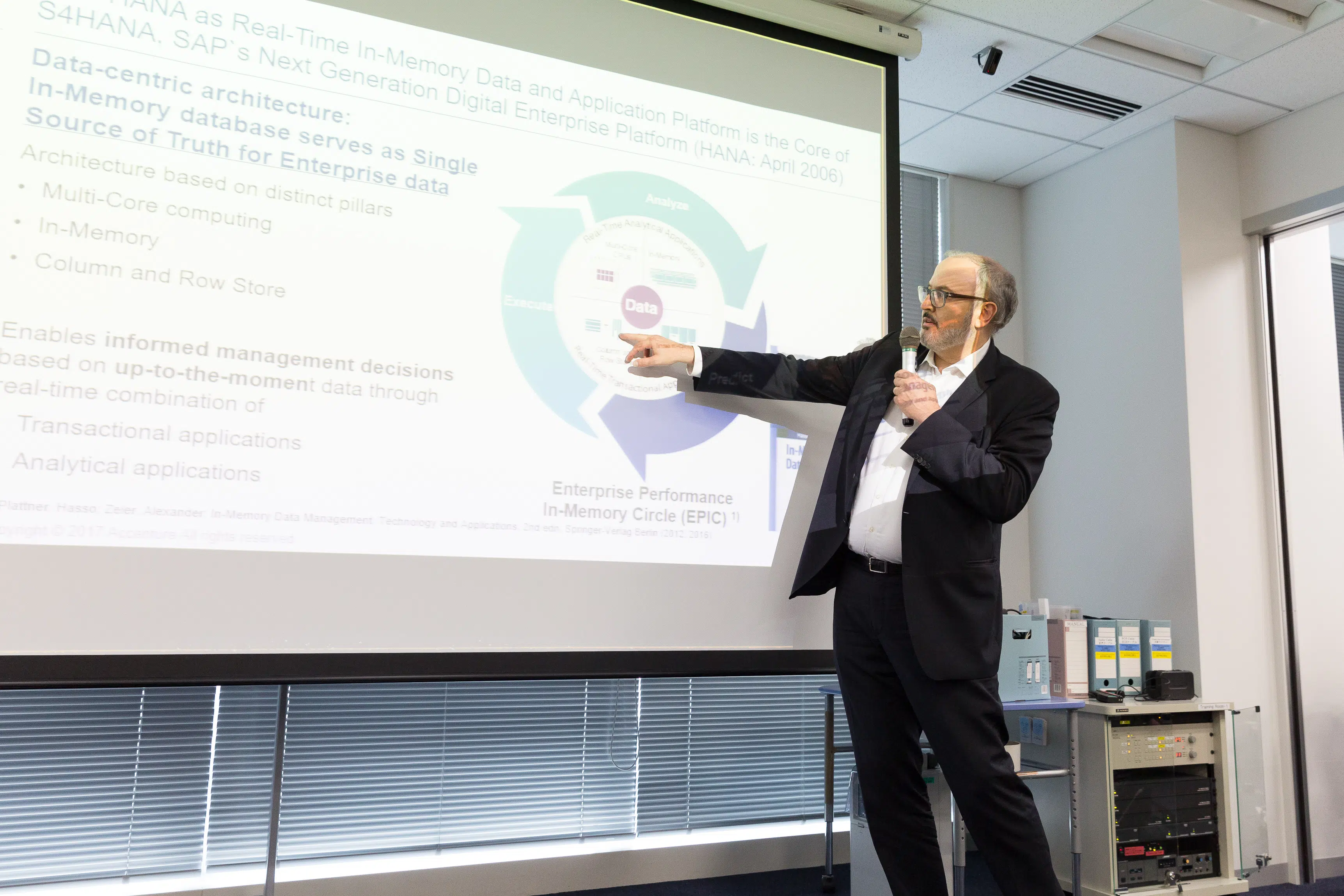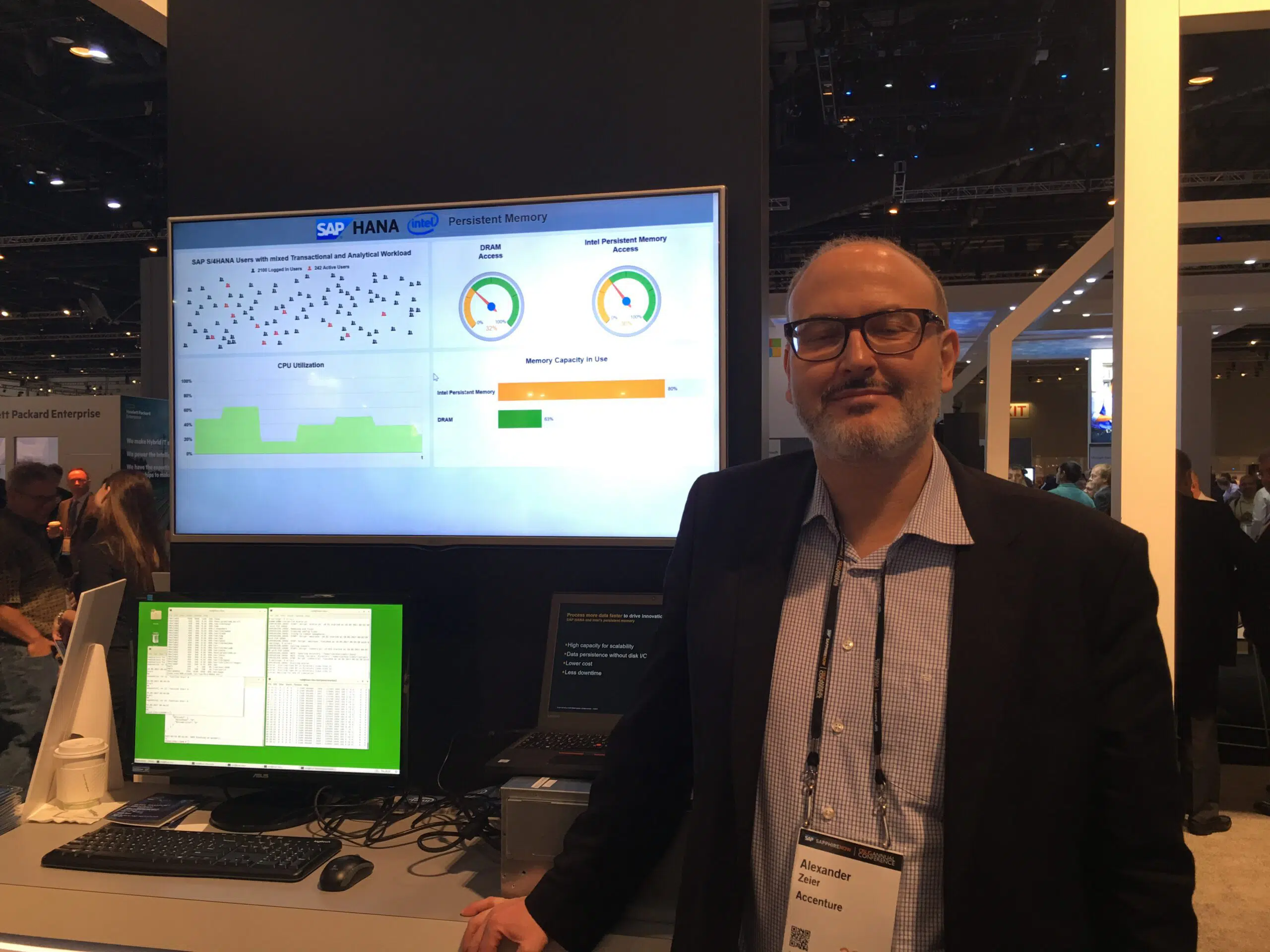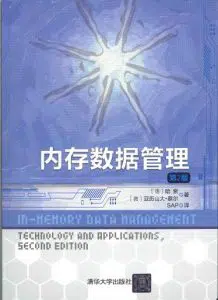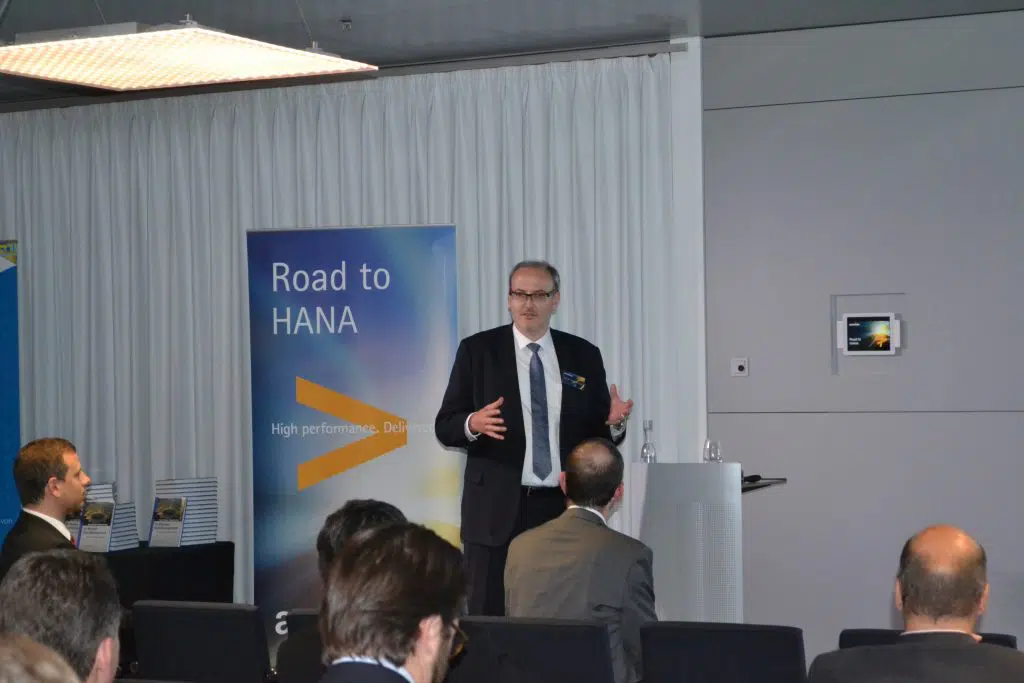You are browsing archives for
Category: Uncategorized
Business Insight at the Speed of Thought – A paradigm shift in data processing that will change your business – Intel Persistent Memory on SAP HANA
UNIVERSITY OF MAGDEBURG APPOINTED DR. ALEXANDER ZEIER AS FIRST HONORARY PROFESSOR AT THE FACULTY OF COMPUTER SCIENCES
UNIVERSITY OF MAGDEBURG APPOINTED DR. ALEXANDER ZEIER AS HONORARY PROFESSOR
Students will learn about promising In-Memory Technology
Dr. Alexander Zeier held his inaugural lecture on June 26th, 2013 as first honorary professor at the Faculty of Computer Sciences at the Otto von Guericke University Magdeburg. He will teach in-memory technology and applications.
In-memory technology manages and organizes huge data bases, and enables companies to analyze large amounts of data and thus react in real time. Production, distribution, shipping and product sales create large amounts of data, which can be stored in data bases. Going forward all relevant questions such as “what was shipped when and where to whom“ can be answered and displayed on mobile devices in real time by analyzing operational mass data.
With the appointment of Alexander Zeier as a honorary professor, students of computer sciences at the University Magdeburg have the possibility to learn about the latest software developments and to receive a sound education in this field. „We foresee a huge demand for experts with capabilities in this technology and are pleased that the University Magdeburg has recognized this important field of education for their students and will focus on in-memory technology“, said Zeier.
Alexander Zeier
Dr. Alexander Zeier is managing director of in-memory solutions at the global management consulting, technology services and outsourcing company Accenture. In this function, he works globally with clients to develop solutions based on in-memory technology. Dr. Zeier has been working with SAP technologies and solutions for over 20 years. He is co-inventor of ten patents filed regarding in-memory technology and applications for enterprise systems, and is co-author of the recently published book, “In-Memory Data Management – Technology and Applications”. During his academic career, Dr. Zeier has published more than 150 technical articles and seven books.
Dr. Zeier received an Dipl-Kfm/MBA from the University of Wuerzburg. He completed his studies in information technology at the Chemnitz University of Technology and gained his Ph.D. in Supply Chain Management Systems at the University of Erlangen-Nuremberg. Dr. Zeier has been a Visiting Professor in Residence at the Massachusetts Institute of Technology (MIT) focusing on in-memory technology and applications.
German Text Website University Magdeburg
Facebook News University Magdeburg for Appointment Honorary Professor Alexander Zeier
Chinese Edition of In-Memory Data Management/HANA book available now through #1 Elite Univ. Tsinghua
Chinese Edition of the In-Memory Data Management/HANA book by Hasso Plattner and Alexander Zeier, is available now: translated, lincensed and published by Tsinghua University Press, the Press of Tsinghua University, #1 Elite Univ. in China for Business Applications.
Press Release by Accenture – New Exciting Times…
Dr. Alexander Zeier Joins Accenture as Global Lead for In-Memory Solutions
Will Also Serve as Director of Programs for SAP HANA® Within the Accenture Innovation Center for SAP® Solutions
MADRID; November 13, 2012 – Accenture (NYSE: ACN) today announced the appointment of Dr. Alexander Zeier as managing director of In-Memory Solutions. In this capacity, Zeier will work with Accenture clients to develop in-memory solutions, provide sales support to global industry teams in leveraging in-memory technology, and provide ongoing thought leadership. He will also serve as director of programs for the SAP HANA® platform within the Accenture Innovation Center for SAP® solutions.
Dr. Zeier has been working with SAP technologies and solutions for over 20 years. Prior to joining Accenture, he was responsible for SAP’s first large in-memory application, and was a pivotal part of the development of SAP HANA, SAP’s platform for real-time analytics and applications. He holds ten patents related to in-memory technology and applications for enterprise systems, and is co-author with Hasso Plattner of the recently published book, “In-Memory Data Management – Technology and Applications.”
“Alexander brings an incredible and unrivaled depth of expertise in the areas of analytics and in-memory technology,” said Christophe Mouille, global managing director of SAP business for Accenture. “Alexander possesses a truly unique understanding of the business value that can be unlocked through the power of in-memory computing. Our clients will benefit from his extensive experience in researching and developing in-memory technology that turns massive amounts of customer data into actionable insights.”
“Accenture has been committed to developing solutions based on in-memory technology for several years, and I am excited to be joining this team to drive further innovations in this important strategic area,” said Zeier. “Companies are relying on transactional and analytical data more than ever. The capabilities enabled by in-memory computing combined with Accenture’s vast industry knowledge will result in better, faster insights and new innovative business processes for our clients.”
Since March 2012, Dr. Zeier has been a Visiting Professor in Residence at the Massachusetts Institute of Technology (MIT), lecturing and conducting research around innovative enterprise applications and business process optimizations that leverage in-memory technology or SAP HANA. He was also deputy chair, Enterprise Platform and Integration Concepts, at the Hasso Plattner Institute in Germany, focusing on real-time, in-memory enterprise systems and RFID technology.
Dr. Zeier received an MBA from the University of Würzburg. He completed his studies in information technology at the Chemnitz University of Technology and gained his Ph.D. in Supply Chain Management Systems at the University of Erlangen-Nuremberg.
About Accenture
Accenture is a global management consulting, technology services and outsourcing company, with more than 257,000 people serving clients in more than 120 countries. Combining unparalleled experience, comprehensive capabilities across all industries and business functions, and extensive research on the world’s most successful companies, Accenture collaborates with clients to help them become high-performance businesses and governments. The company generated net revenues of US$27.9 billion for the fiscal year ended Aug. 31, 2012. Its home page is www.accenture.com.
Source: link
Foreword by CTO Realtech AG for German Edition of In-Memory/HANA Book
Vorwort für dt. Ausgabe des In-Memory-Buchs (sorry only in German, published in June 2012)
Titel: Grenzen überwinden
In-Memory Data Management ist eine bahnbrechende Innovation, die unser aller Leben für
und mit IT verändern wird.
Was ist so bahnbrechend daran, warum jetzt und warum von SAP bzw. für ERP-Anwen-
dungen? Dieses Buch von Hasso Plattner und Alexander Zeier wird alle diese Fragen be-
antworten. Als kleinen Vorgeschmack einige wesentlichen Dinge:
Schnelles Computing großer Datenmengen an sich ist kein wirklich neues Thema. In
Echtzeit erhobene Daten, wie z. B. Wetterdaten oder Daten aus dem Banken- und Versicherungssegment, und ihre Analyse haben den Einsatz von Großrechnern mit sehr großer Prozessor- und Hauptspeicherkapazität schon immer erforderlich gemacht. Auch bei der Bewältigung sehr großer Datenmengen in der Bildverarbeitung wurden in den letzten 20 Jahren bereits einige Meilensteine erreicht. Die Erfolgsgeschichte von Pixar – animierte Kinofilme in nahezu „True Reality“ – sind ein gutes Beispiel dafür, wie der technologische Fortschritt Geschäftsmodelle beeinflussen oder gar erst möglich machen kann.
Laut einer Studie von IDC wurden im Jahr 2011 weltweit 19 Million Terabytes an Daten
erzeugt und repliziert. Darunter sind meiner eigenen Schätzung nach ca. 0,5 bis 1 Million
Terabyte SAP-Daten; und zwar wesentliche Daten aus den Bereichen Vertrieb, Marketing,
Produktion und Finanzen – also die Schlüsseldaten jedes Unternehmens. Genau diese sollten in Echtzeit korreliert und analysiert werden können. Der Trend zu „Big Data“ hält also ungebrochen an, und ERP-Daten sind ein Teil davon.
Wo stehen wir heute?
Aufgrund technischer Limitierungen wurden große Datenmengen bisher asynchron, also
im Hintergrund, aufbereitet und in Business-Analysen, Auswertungen wie SAP CO-PA
(Controlling-Profitability-Analysis) oder Kalkulationsläufen für die Produktion großer An-
lagen verarbeitet. Die Nachteile fehlender Echtzeit, doppelter Datenhaltung, komplizierter
Anpassungen von Schemata und davon abhängenden Benutzeroberflächen mussten zwangsläufig in Kauf genommen werden.
Dateibasierte Datenbanken – auch unter SAP – auf langsamen Datenträgern sind letztlich
der Grund für die fehlende Performance. Diese könnte zwar mit neuen Speichermedien wie Solid State Drives (SSD) verbessert werden, jedoch sind diese Lösungen noch nicht wirtschaftlich sinnvoll einsetzbar. Der Preis pro Speicherkapazität und ihre noch nicht ausgereifte Langzeitstabilität verhindern immer noch einen flächendeckenden kommerziellen Business-Einsatz. Darüber hinaus verhindern klassische Datenbanken mit zweidimensionalen Tabellen einen schnellen Datenzugriff – und dies trotz aller Bemühungen der Datenbankhersteller im Bereich der Indizierung, des Datenbank-Cachings und der Datenkompression.
Und hier kommt nun In-Memory-Computing ins Spiel.
Neue Chancen für das Business
Die Vorteile des In-Memory-Computings sind riesig. Begünstigt durch die technologische
Entwicklung günstigerer Rechnermodelle mit speziellen Intel-Prozessoren, Multi-Core-
Architekturen und RAM im Terabyte-Bereich lassen sich heute zu vergleichbar niedrigen
Preisen sehr große Datenmengen im Hauptspeicher vorhalten und verarbeiten. Der Datenzugriff auf einen Speicherblock im Arbeitsspeicher ist dabei rund 2.000-mal schneller als der auf einer klassischen Festplatte.
Ein weiteres sehr wichtiges Merkmal von SAP HANA ist die spaltenorientierte Ablage,
die einen ressourcen-schonenden – und damit schnelleren – Zugriff auf die Daten erlaubt und ebenso eine geniale Möglichkeit bietet, strukturierte Daten sehr hoch zu komprimieren.
Dort, wo das Business durch limitierende Faktoren in der Verarbeitungsgeschwindigkeit
von Daten nur eingeschränkt kreativ sein konnte, eröffnen sich mit dieser Technologie neue Perspektiven. Die Grenzen zwischen transaktionaler Welt und dem Reporting werden verschwinden. Und auch die Datenqualität und der Reichtum an Daten auf mobilen Geräten werden deutlich zunehmen, da die Barrieren zwischen serverseitig langsamem Computing und den Anforderungen an eine schnelle Visualisierung fallen werden. Bestehende und ganz neue Applikationen werden entstehen;; sie lassen sich viel benutzerfreundlicher entwickeln, wenn all diese Limitierungen gefallen sind. In anderen Worten: „Alle Daten, verfügbar jederzeit, in jeglicher Dimension und in jeder Aggregationsstufe und mit ganz wenigen Clicks“ – etwas, das wir uns alle schon lange gewünscht haben als eine Art „besseres Google“ für strukturierte und unstrukturierte Unternehmensdaten.
Dr. Rudolf Caspary, CTO REALTECH AG, Walldorf
Why In-Memory/HANA for Real-time Enterprise Management
Today and Tomorrow
Imagine you live in New York City. Now, imagine that every time you want a glass of water, instead of getting it from the kitchen, you need to drive to the airport, get on a plane and fly to Germany and pick up your water there. From the perspective of a modern CPU, accessing data which is in-memory is like getting water from the kitchen.
Accessing a piece of data from the computer’s hard disk is like flying to Germany for your glass of water. In the last 30 years the prohibitive cost of main memory has made the flight to Germany necessary. The last few years, however, have seen a dramatic reduction in the cost per megabyte of main memory, finally making the glass of the water in the kitchen a cost effective and much more convenient option.
This orders-of-magnitude difference in access times has profound implications for all enterprise applications. Things that in the past were not even considered because they took so long, now become possible, allowing businesses concrete insight into the workings of their company that previously were the subject of speculation and guess-work. The in-memory revolution is not simply about putting data into memory and thus being able to work with it “faster”.
It shows the convergence of two other major trends in the IT industry also:
a) The advent of massiv multi-core CPUs and the necessity of exploiting this parallelism in software, and
b) The stalling access latency for DRAM, requiring software to cleverly balance between CPU and memory activity; have to be harnessed to truly exploit the potential performance benefits.
Another key aspect of in-memory/HANA for real-time enterprise apllications, is a change in the way data is stored in the underlying database. This is of particular relevance for the enterprise applications that are our focus.
The power of in-memory/HANA is in connecting all these dots.
The Revolutioary Power of In-Memory/HANA
Our 6-years of experience has shown us that many enterprise applications work with databases in a similar way. They process large numbers of rows during their execution, but crucially, only a small number of columns in a table might be of interest in a particular query. The columnar storage model like used in HANA allows only the required columns to be read while the rest of the table can be ignored. This is in contrast to the more traditional row-oriented model, where all columns of a table—even those that are not necessary for the result—must be accessed. The columnar storage model also means that the elements of a given column are stored together.
This makes the common enterprise operation of aggregation much faster than in a row-oriented model where the data from a given column is stored in amongst the other data in the row.
Scaling Out Due Parallelization Across Multiple Cores and Servers
Single CPU cores are no longer getting any faster but the number of CPU cores is still expected to double every 18 months. This makes exploiting the parallel processing capabilities of massiv multi-core CPUs (A rack has up to 800 CPU-cores) of central importance to all future software development.
As we saw above, in-memory columnar storage like SAP HANA places all the data from a given column together in memory making it easy to assign one or more cores to process a single column. This is called vertical fragmentation. Tables can also be split into sets of rows and distributed to different processors, in a process called horizontal fragmentation.
This is particularly important as data volumes continue to grow and has been used with some success to achieve parallelism in data warehousing applications. Both these methods can be applied, not only across multiple cores in a single machine, but across multiple machines in a cluster or in a data center.
Compression for Performance and to Save Space in Main Memory
Data compression techniques exploit redundancy within data and knowledge about the data domain. Compression applies particularly well to columnar storage in an enterprise data management scenario, since all data within a column has the same data type and in many cases there are few distinct values, for example in columns like country, town, name, or status. In column stores like SAP HANA, compression is used for two reasons: to save space and to increase performance. Efficient use of space is of particular importance to in-memory data management because, even though the cost of main memory has dropped considerably, it is still relatively expensive compared to disk. Due to the compression within the columns, the density of information in relation to the space consumed is increased. As a result more relevant information can be loaded for processing at a time thereby increasing performance. Fewer load actions are necessary in comparison to row storage, where even columns of no relevance to the query are loaded without being used.
In Memory/HANA – Rethinking Application Development to Achieve in the Near Future a Real “Real-time Enterprise”
In-memory/HANA is not only a technology but a different way of thinking about software development: we must take fundamental hardware factors into account, such as access times to main memory versus disk and the potential parallelism that can be achieved with multi-core CPUs. Taking this new world of hardware into account, we must write software that explicitly makes the best possible use of it. On the positive side for developers of new real-time enterprise applications, this lays the technological foundations for a database layer tailored specifically to all these issues. On the negative side, however, the database will not take care of all the issues on its own. Developers must understand the underlying layers of soft- and hardware to best take advantage of the potential for a real-time enterprise.
In-Memory/HANA – Start of real “Real-time Enterprise” – Real-time Analytics, Predictions and Execution
Vorwort von Gerd Oswald fuer deutsche Ausgabe des In-Memory-Buchs von Plattner/Zeier
Beschleunigung, Innovation, Reduktion
Hasso Plattner beweist mit In-Memory wieder einmal, welche unglaubliche Kraft ein technologischer Innovationsschub entwickeln kann. Unternehmens-Software wird einen Entwicklungssprung vollziehen, wie wir ihn zuletzt beim Übergang aus der Großrechnerwelt (SAP R/2) in die Client-Server-Welt (SAP R/3) gesehen haben. Wir erleben die Begeisterung für die Möglichkeiten der In-Memory-Technologie täglich bei unseren Entwicklern, in jedem Produktbereich.
Unsere Kunden werden diese Begeisterung teilen, sobald sie von unserer In-Memory-Technologie durch mehr Geschäftsinnovation, vereinfachte Prozesse und beschleunigte Abläufe für ihr Unternehmen profitieren.
Beschleunigung
Mehr Geschwindigkeit ist das offensichtlichste In-Memory-Merkmal. Es werden aber nicht nur die bestehenden Prozesse beschleunigt – es werden ganz neue Anwendungsszenarien möglich. Echtzeitanalysen auf Transaktionssystemen führen zu besseren Entscheidungen und unmittelbarer Umsetzung. Planungsszenarien können häufiger durchgespielt werden und dabei wesentlich mehr Variablen berücksichtigen. So können Mitarbeiter auf allen Ebenen weiter und sicherer in die Zukunft blicken – egal ob es um operative Entscheidungen im Call-Center oder um die strategische Ausrichtung im Konferenzraum der Geschäftsleitung geht.
In-Memory ermöglicht die direkte Verarbeitung massenhafter Daten auf Einzeltransaktionsebene. Damit wird Herrschaftswissen auf Aggregatebene aufgelöst und der Zugang zu Information und Daten demokratisiert. So können Mitarbeiter auf allen Ebenen effektivere Entscheidungen fällen. Erste Kunden haben es bereits geschafft, mithilfe einer In-Memory-Profitabilitätsanalyse viel schneller als bisher auf Nachfrageschwankungen je Produkt und Land zu reagieren. Diese erhöhte Agilität des Unternehmens hat einen direkten Einfluss auf Profitabilität und Risiko gezeigt.
Geschäftsinnovation
In-Memory ermöglicht auch vollkommen neue Geschäftspraktiken und -modelle. Im „Internet der Dinge“ melden Maschinen ihren Status und ihre Betriebsdaten an den Hersteller. Durch Musteranalyse in den Meldungen können Probleme erkannt und durch präventive Wartung behoben werden, ohne dass es zu Fehlern und Ausfällen kommt – das ist mit klassi- scher Datenbanktechnologie nicht umsetzbar. Soziale Netzwerke reflektieren Stimmungen und Meinungen der End-Anwender von Produkten und Dienstleistungen – mit In-Memory-Technologie können diese unstrukturierten Daten analysiert und für Marketing-, Vertriebs- und Produktmanagement-Initiativen verwendet werden.
Vereinfachung
Die Fähigkeit von In-Memory-Systemen zur Echtzeitverarbeitung großer Datenmengen erlaubt die Vereinfachung von Systemen. Die Trennung zwischen Transaktionssystemen und analytischen Systemen kann wegfallen – weniger Komplexität und redundanzfreie Daten- haltung machen das Leben einfacher. Datenaggregate und vordefinierte Auswertungspfade werden nicht mehr gebraucht, das vereinfacht die Datenhaltung und gibt den Anwendern einfacheren und schnelleren Zugang zu Informationen.
Hasso Plattner und Alexander Zeier zeigen Perspektiven, die nicht nur für CIOs relevant sind. In-Memory schafft Innovations-, Vereinfachungs- und Beschleunigungspotenziale für das ganze Unternehmen. Sie sind damit für die Geschäftsleitung von strategischer Bedeutung in Bezug auf die Unternehmensentwicklung.
Gerd Oswald, Member of the Board, SAP AG, Walldorf
MIT Quote by Prof Simchi-Levi for In-Memory Book by Plattner & Zeier : …new revolutionary…speed…usability…
|








